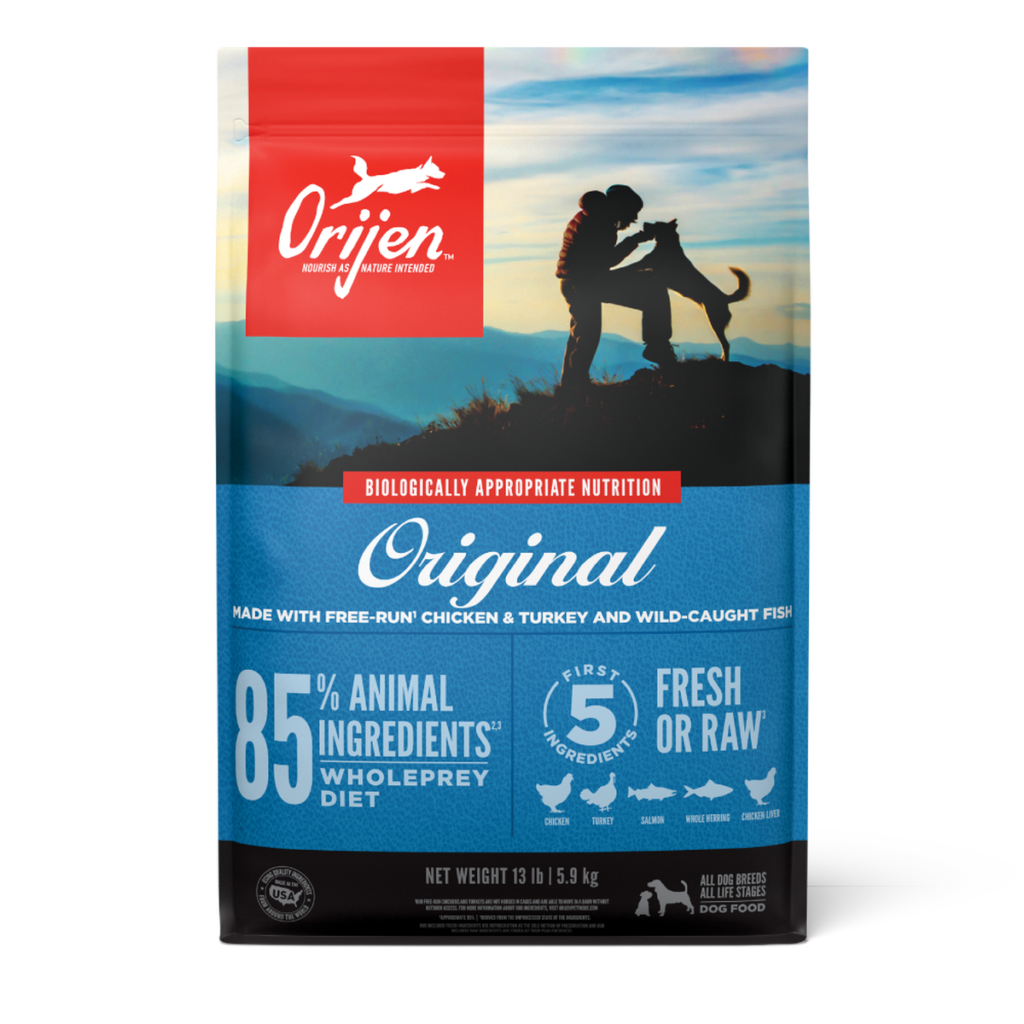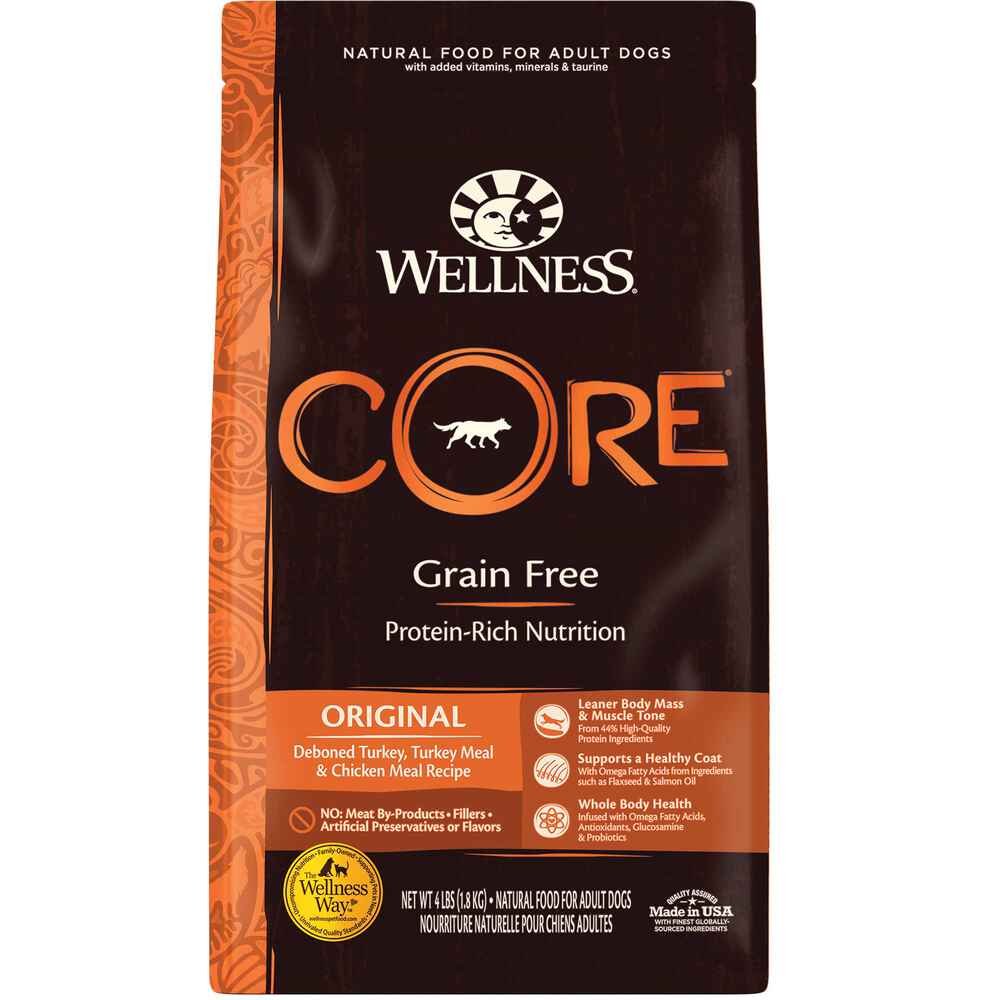Table of Contents
A Nutrition Guide for Dogs
When it comes to keeping your dog healthy, what you feed them plays a pivotal role. Just like humans, dogs need a well-rounded diet rich in essential nutrients to function optimally. This guide will walk you through the critical components of canine nutrition, help you understand the essentials of a balanced dog diet, and offer practical tips to nourish your beloved pet.
Understanding Canine Nutritional Needs:
1. Proteins: The Building Blocks of Health
- Function: Essential for muscle growth, tissue repair, and overall energy.
- Sources: Lean meats like chicken, beef, and fish; eggs and some dairy products.
Recommended Foods:

- Blue Buffalo Life Protection Formula Adult Chicken & Brown Rice Recipe
- Why: This product features high-quality chicken as the first ingredient, providing lean protein for muscle growth and tissue repair.
2. Fats: Essential But Often Misunderstood
- Function: Fats provide energy, help absorb vitamins, and maintain skin and coat health.
- Sources: Fish oil, flaxseed, and quality commercial dog foods designed with balanced omega fatty acids.
Recommended Foods:

- Orijen Original Dry Dog Food
- Why: Contains a good balance of essential fats from sources like chicken fat, whole eggs, and fish, which support energy levels and coat health.
3. Carbohydrates: More Than Just Fillers
- Function: Though not essential, they provide a quick energy source and help with intestinal health.
- Sources: Whole grains like brown rice and oats, and vegetables like sweet potatoes.
Recommended Foods:

- Wellness CORE Grain-Free Original Recipe
- Why: Made with carbohydrates from vegetables like potatoes and peas, this grain-free recipe provides a good source of energy and dietary fiber.
4. Vitamins and Minerals: The Micronutrients Powerhouse
- Function: Crucial for preventing disease and maintaining vital bodily functions.
- Sources: A variety of fruits, vegetables, meats, and specially formulated dog foods.
Recommended Foods:

- Hill’s Science Diet Adult Sensitive Stomach & Skin Chicken Recipe
- Why: Formulated with a variety of fruits and vegetables, this product provides an excellent mix of vitamins and minerals that support overall health.
5. Water: The Overlooked Nutrient
- Function: Maintains hydration, aids in digestion, and helps regulate body temperature.
- Sources: Fresh, clean water should always be available.
Debunking Common Dog Food Myths:
- Myth 1: Grain-free diets are healthier for all dogs.
- Fact: Grain-free diets are only necessary for dogs with specific allergies.
- Myth 2: Dogs should eat the same food at every meal.
- Fact: Dietary variety can prevent allergies and provide a more balanced intake of nutrients.
- Myth 3: Raw diets are the most natural and healthiest option for dogs.
- Fact: Raw diets carry risks of bacterial contamination and nutritional imbalances.
Navigating the complexities of canine nutrition can seem daunting, but it’s a vital part of ensuring your dog’s health and happiness. With the right knowledge and a proactive approach, you can make informed decisions about your dog’s diet. Whether you opt for commercial foods, homemade meals, or a combination, the goal is always the same: a nutritious, balanced diet that supports your dog’s lifelong health and vitality.
Related Information on This Topic:
Battle of the Bulge: Winning Strategies for Managing Your Dog’s Weight
It’s not just about portion control; it’s about smarter food choices. High-fiber, low-fat options such as pumpkin and lean meats like turkey are perfect. They satisfy hunger without the extra calories. Integrating regular, fun exercise routines can also turn weight management into playtime. Who says a workout can’t be a game of fetch?
Sweet Tips for Diabetic Dogs
Managing diabetes in dogs goes beyond just avoiding sugar. It’s about stable, low glycemic foods that provide consistent energy levels. Incorporating complex carbohydrates like barley and whole oats can make all the difference. Consistency in meal times and portion sizes can help maintain balanced blood sugar, reducing the risk of spikes and dips.
Old Timers: Keeping Joints Jumpy
For the older dog in your life, maintaining joint health is crucial. Integrating foods rich in omega-3 fatty acids and glucosamine supports joint flexibility and reduces discomfort. Think about adding salmon or a specialized senior dog food formula to their diet. Gentle, regular exercise like swimming can also keep them agile without straining their joints.
Decoding Doggy Diets: Dry Vs. Wet Food
Choosing between dry and wet food isn’t just about preference; it’s about your dog’s health needs. Dry food is great for dental health as it helps reduce tartar build-up. Wet food, on the other hand, can be beneficial for hydration and may be easier for some older dogs to eat. Consider your dog’s lifestyle and health to make the best choice. Sometimes, a combination of both keeps mealtime exciting and nutritious.
Chef’s Hat On: Whipping Up Homemade Dog Food
Creating homemade dog meals lets you control every ingredient, tailoring the diet to your dog’s specific needs. Start with a simple recipe: a balance of lean proteins, vegetables, and grains. Cook everything thoroughly to avoid health risks. Always consult with a vet or pet nutritionist to ensure these meals are nutritionally complete.








